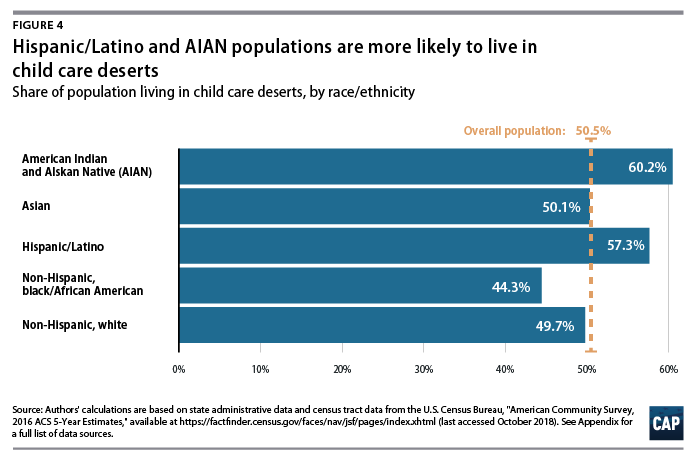
Share On Social!
51% of Americans live in child care deserts, in which Latinos are greatly disproportionately affected, according to a new report by the Center for American Progress.
Child care deserts are defined as regions where there are no licensed child care providers for kids under the age of 5 and/or there is less than one slot in an accredited child care center for every 3 children under the age of 5.
Latinos and Child Care Deserts
Even though Latinos are the fastest-growing racial/ethnic group in the US and 25% of kids in the US are Latino, Latino families are more probable to live in regions with scarce child care options, according to the report.

60% of Latinos live in regions that have an undersupply of licensed child care centers. Furthermore, areas where the Latino population are in close proximity to accredited child care does not mean they have access to it due to many systematic barriers and factors such as high cost and low wages.
The report also found that immigrant Latino low-income households with children younger than the age of 3 had significantly lower rates of involvement in early childhood care and education as compared to native born Latino households.
Rural Child Care Deserts
Families who live in rural areas also face similar challenges as Latino families, with 3 in 5 rural communities lacking licensed child care supply. To put in perspective, high-income suburban neighborhoods are the least probable to have childcare shortages.
But there’s more bad news, rural areas have the highest rate of child care deserts overall with 59%.
This number includes not only licensed child care providers and centers, but home-based child care. Looking at it from both angles, in rural America there is still a vast disparity of child care infrastructure.
Solutions and Recommendations
It is known that access to affordable, quality childcare is an effective way to combat poverty and help children be successful in the future.
The Center for American Progress has several policy recommendations that can help increase access to affordable, quality childcare.
- Improve data collection for infant and toddler childcare.
- Increase public investment in childcare for infants and toddlers to reflect the cost of providing care.
- Invest in child care infrastructure.
- Paid family and medical leave.
- Implement a comprehensive solution to support the early childhood education system.
Explore More:
Healthy Neighborhoods & CommunitiesBy The Numbers
1
Supermarket
for every Latino neighborhood, compared to 3 for every non-Latino neighborhood



